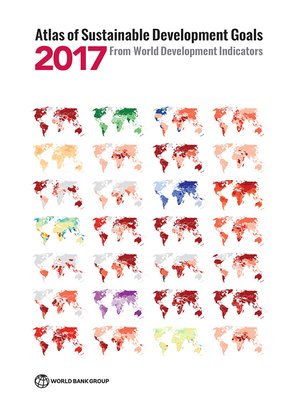Atlas of Sustainable Development Goals 2017
ebook ∣ From World Development Indicators · World Bank Atlas
By World Bank

Sign up to save your library
With an OverDrive account, you can save your favorite libraries for at-a-glance information about availability. Find out more about OverDrive accounts.
Find this title in Libby, the library reading app by OverDrive.



Search for a digital library with this title
Title found at these libraries:
| Loading... |
The Atlas of Sustainable Development Goals 2017 uses maps, charts and analysis to illustrate, trends, challenges andmeasurement issues related to each of the 17 Sustainable Development Goals. The Atlas primarily draws on WorldDevelopment Indicators (WDI) - the World Bank's compilation of internationally comparable statistics about globaldevelopment and the quality of people's livesGiven the breadth and scope of the SDGs, the editors have been selective, emphasizing issues considered important byexperts in the World Bank's Global Practices and Cross Cutting Solution Areas. Nevertheless, The Atlas aims to reflectthe breadth of the Goals themselves and presents national and regional trends and snapshots of progress towards theUN's seventeen Sustainable Development Goals: poverty, hunger, health, education, gender, water, energy, jobs,infrastructure, inequalities, cities, consumption, climate, oceans, the environment, peace, institutions, and partnerships.Between 1990 and 2013, nearly one billion people were raised out of extreme poverty. Its elimination is now a realisticprospect, although this will require both sustained growth and reduced inequality. Even then, gender inequalitiescontinue to hold back human potential.Undernourishment and stunting have nearly halved since 1990, despite increasing food loss, while the burden ofinfectious disease has also declined. Access to water has expanded, but progress on sanitation has been slower. For toomany people, access to healthcare and education still depends on personal financial means.To date the environmental cost of growth has been high. Accumulated damage to oceanic and terrestrial ecosystems isconsiderable. But hopeful signs exist: while greenhouse gas emissions are at record levels, so too is renewable energyinvestment.While physical infrastructure continues to expand, so too does population, so that urban housing and rural access toroads remain a challenge, particularly in Sub-Saharan Africa.Meanwhile the institutional infrastructure of development strengthens, with more reliable government budgeting andforeign direct investment recovering from a post-financial crisis decline. Official development assistance, however,continues to fall short of target levels.






